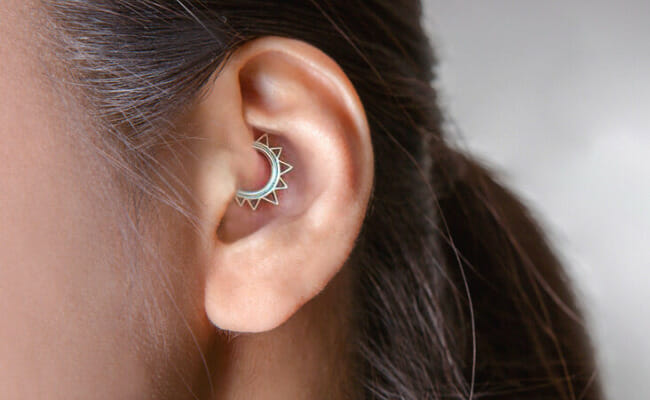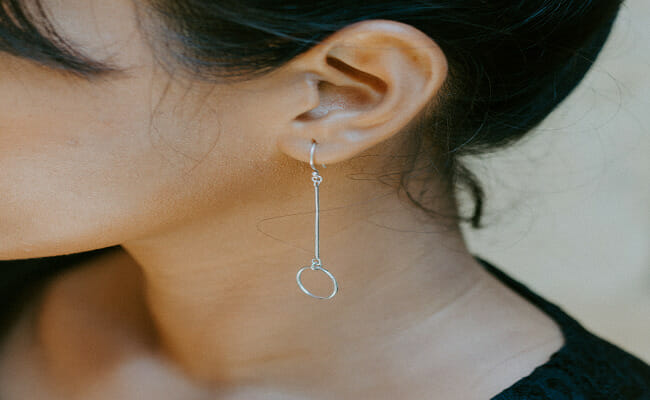Ear Piercings: Fully Explained
It’s amazing how accessories can do wonders to one’s appeal and appearance. Taking new heights and proportions, accessorizing with ear piercings has become a status symbol of beauty and individuality across different generations. Ear piercings are much more than just eye candy. In addition, it is very much a vital part of pop culture today.
The tradition of ear piercing dates back to 5,000 B.C., and it represents a tribal identity, religion, or could be political by nature. Ear piercings in the United States became popularly evident again in the 70s until the present time.
Apart from necklaces and chokers, ear jewelry and piercing jewelry are fun to experiment with. It comes in different forms, such as clip-on earnings, cuff jewelry, and even ‘fake’ piercing, which is more of an event showoff.
On the other hand, trendier ear piercings are for those ready to take accessorizing to the next level. Do take note that no two piercings are the same. The piercing ‘style’ could be costly depending on the type of piercing you want for your ear. In addition, you have to consider the jewelry you will wear after ear piercing.
As there are different types of piercings, there are other kinds of piercing jewelry. You can choose from simple hoops to curved barbells and flatback earrings. Aside from the design, equally important to consider is the jewelry material, whether sterling silver, gold, rose gold, or platinum, which is for long time use.
Different Ear Piercing Styles
If it is your first time getting a trendier piercing or you want to add more, check out our list of great ear piercings to suit your lifestyle. Scroll down our list.
Lobe Piercing
Lobe piercing is the standard and most common position Piercing can be in the lower, middle, and upper lobe piercings. Piercing is quick and easy to heal. In addition, multi-piercings look good in this area.
- Pain level: 2/10. Low pain and tolerable.
- Healing Time: 4 – 6 weeks for pierced ears.
Suggested Jewelry: Studs, graduated hoops, or even barbells are great piercing jewelry.
Helix Piercing
Helix piercing is otherwise called cartilage piercing. The area for piercing is at the upper edge of your ear. Though smaller than the conch hoop, the piercing is found high up on the ear.
Mostly, diamonds, ball studs, and hoops accessorize the specific area. In addition, the piercing is quite significant, and multiple piercings such as double helix or triple helix are suitable. You can only change the piercing once it heals.
- Pain Level: 5/10. There is less pain since the cartilage area lacks nerve endings. The piercing can become red and itchy after a few days, which is a normal reaction.
- Healing Time: Within six months.
Suggested Jewelry: Piercings will look stunning with 6mm or 8mm flat back earrings or cartilage hoops.
Forward Helix Piercing
The Forward Helix is the small outer cartilage edge found at the top front of your ear. It’s directly across the ear from the regular helix. Forward helix piercings are popular among millennials for their edgier look. It works very well for multiple piercings.
- Pain Level: 6/10 is the average pain for cartilage piercings
- Healing Time: 3 – 6 months
It doesn’t hurt as much as the Helix Piercing. However, you should be aware that the forward helix cartilage has more nerve endings than the standard helix, so it could be slightly more sensitive.
Suggested Jewelry: Flat Back Stud Earrings are good choices, but it is possible to wear small cartilage hoops. You may also opt to wear three fun trios of studs.
Conch Piercing
The conch is the inner cup part of your ear. Your ear has two main regions of this middle cartilage: the inner and outer conch. The lower half is generally known as the inner conch, whereas the upper half is usually known as the outer conch.
- Pain Level: 6/10. The average pain for cartilage piercings
- Healing Time: 6 – 12 months
Total healing is from 6 to 12 months to recover fully. Avoid touching the area and changing the earrings before it’s completely healed.
Suggested Jewelry: Piercing jewelry can come in the form of bars, cartilage hoops, flat back stud earrings, or opt for horseshoe style earrings (classic open gold hoop earrings with a tiny crystal stud)
Daith Piercing

Photo Credit: Healthline.com
Pronounced “doth,” daith is found on the smallest fold of cartilage in your ear; it is the area where the outer ridge of your ear meets your inner ear above the ear canal. True enough, the location is tricky and challenging to pierce. However, this piercing remains popular because of its unique aesthetic.
- Pain Level: 6/10. It takes about 10 seconds to pierce the area because it has to be precise.
- Healing Time: 4 – 12 months.
Even if its piercing area is tricky, a daith shouldn’t hurt any more than any other cartilage piercings.
Suggested Jewelry: Cartilage hoops and barbells.
Rook Piercing
Rook piercing is another popular piercing style, which is in the inner ear. The piercing area is above the daith. It is beneath the rim or helix of the ear. Like any cartilage piercing, there is pain and discomfort involved.
Other ‘adventurous’ individuals prefer to have the rook piercing because of its unique and unusual style. If you want t a beautiful and extraordinary piercing, then the rook style is worth the pain and effort.
- Pain Level: 6/10. The average pain for cartilage piercing
- Healing Time: 6-9 months
Suggested Jewelry: Curved barbell
Auricle Piercing
The auricle is the trim area on your ear between your helix (outer fold) and earlobe.
Between the helix and the lobe piercings, the auricle piercing looks fantastic on its own or as part of a cartilage cluster. Like the helix, there’s a wide area available to puncture. Identify which size you to get your auricle pierced.
Auricle piercing is a type of cartilage piercing that requires extra effort and care in the healing process so it doesn’t get damaged easily.
- Pain Level: 3/10, because of the thinness of auricle cartilage in comparison to others
- Healing Time: 3-9 months
Suggested Jewelry: Bead rings, studs, and hoops look great. Consider a twisted or curved barbell as ear accessories for a unique look.
Anti-Tragus Piercing
Step up your look with the anti-tragus piercing, an excellent ear piercing. Opposite the tragus area, the anti-tragus is the relatively small vertical lip of cartilage directly above your earlobe. Pinch your earlobe and when you encounter a triangular-shaped piece of cartilage sticking out, the anti-tragus.s one of the more painful cartilage piercings.
- Pain Level: 6/10 – General pain threshold for cartilage piercings
- Healing Time: 2 – 4 months; 1 year to fully recover
Suggested Jewelry: Small curved or circular barbells are ideal piercing jewelry to stand out. Others prefer lowkey small hoops and beaded rings.
Snug Piercing
Don’t take the snug piercing lightly. What is this type of piercing exactly? The snug piercing is described as horizontal piercing through the inner ridge of the ear cartilage. Snug piercings come with different names. It is also called anti-snug or anti-helix piercing.
Many claims that this piercing is for those brave enough to conquer pain. This is because the snug piercing is considered the most painful cartilage piercing. However, you have to check with your professional piercer if your ear can accommodate this piercing.
The piercing will be done on the top of the anti-tragus and is inserted through an anti-helix. On top of that, it is a ‘horizontal’ piercing, meaning the bar jewelry should seamlessly connect both the anti-tragus and anti-helix areas. A snug piercing’s entry and exit points are visible from the front of the ear.
- Pain Level: 9/10. Inner ear cartilage is thick. Snug piercing is the most painful cartilage piercing among the rest. You may experience pain for several days, but it will eventually disappear.
- Healing Time: Up to 9 months. As the piercing heals, watch out for snug bumps.
Suggest Jewelry: Curved barbells and rings. Titanium or gold is the preferred metal.
Orbital Piercing

Photo Credit: pierce.com
Orbital piercing is a type of piercing style that involves two holes connected using one ring. This makes the ring look like an ‘orbit.’
The piercing is at the center of the helix region. You may opt to have the piercing done anywhere, even on the ear lobes.
- Pain Level: 6/10. Not bad, but it consists of two different piercings rather than just one.
- Healing Time: Up to 1 year to heal fully.
Even though pain tolerance differs from person to person, this procedure could be pretty painful.
Suggested Jewelry: Ball closure rings are usually preferred for this type of piercing jewelry. You can also use horseshoe rings and curved barbells.
Industrial Piercing
Don’t be deceived by its name. Industrial is far from being a ‘boring’ piercing. Industrial piercing is a two-cartilage perforation of the upper cartilage. It is also known as the bar or scaffold piercing and comes with a single barbell. There are piercing options, such as two helix piercings with one bar and two conch piercings with a vertical bar.
- Pain Level: 6/10. The piercing goes through the rim cartilage. There are two ‘separate’ piercings for the Industrial style.
- Healing Time: Up to 6 months
Suggested Jewelry: barbell is the piercing jewelry of choice
Conclusion
Getting a modern ear piercing is a personal choice. Now that you have seen our compilation of piercings, are you all set for your ear piercing? Before getting your ear makeover, take note of some helpful tips to prevent your piercing from getting infected.
- To avoid infection, wash your hands thoroughly before and after touching your piercing.
- Clean the piercing two or three times a day.
- You may buy the saline solution when cleaning your piercing
- Avoid using scented soaps
- Avoid using headphones that press against the jewelry.
- Try not to sleep in the pierced area.
- Use earbuds or headphones that don’t press against the piercing.
- Be observant. Check for unusual changes, such as fever, chills, discharge, and severe swelling. See a medical professional if more symptoms of infection occur.
Like tattoos, ear piercings are extraordinary and stunning. Pick one that will show your unique mark to the world.




